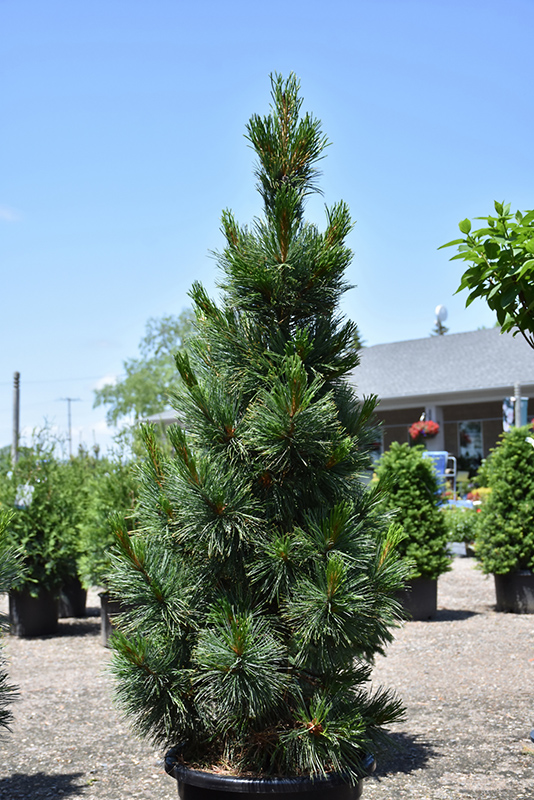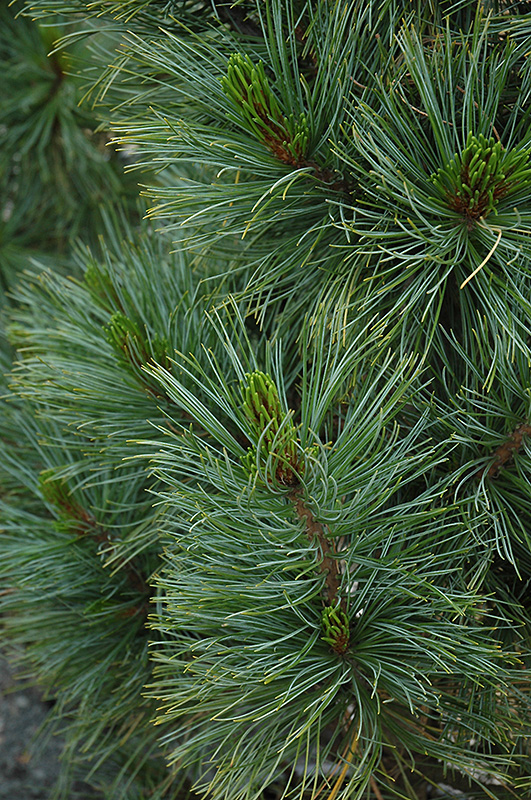Height: 30 feet
Spread: 12 feet
Sunlight:
![]()
Hardiness Zone: 3
Other Names: Arolla Pine
Description:
An excellent vertical accent evergreen, with a dense, narrowly pyramidal habit of growth; keeps its lower branches to the ground longer than other pines, remains dense and upright at maturity; hardy and adaptable to dry soils, somewhat slow growing
Ornamental Features
Algonquin Pillar Swiss Stone Pine is primarily valued in the landscape for its distinctively pyramidal habit of growth. It has powder blue-variegated dark green foliage. The needles remain dark green throughout the winter.
Landscape Attributes
Algonquin Pillar Swiss Stone Pine is a dense evergreen tree with a strong central leader and a distinctive and refined pyramidal form. Its average texture blends into the landscape, but can be balanced by one or two finer or coarser trees or shrubs for an effective composition.
This is a relatively low maintenance tree. When pruning is necessary, it is recommended to only trim back the new growth of the current season, other than to remove any dieback. It has no significant negative characteristics.
Algonquin Pillar Swiss Stone Pine is recommended for the following landscape applications;
- Accent
- Vertical Accent
Planting & Growing
Algonquin Pillar Swiss Stone Pine will grow to be about 30 feet tall at maturity, with a spread of 12 feet. It has a low canopy with a typical clearance of 2 feet from the ground, and should not be planted underneath power lines. It grows at a slow rate, and under ideal conditions can be expected to live to a ripe old age of 120 years or more; think of this as a heritage tree for future generations!
This tree should only be grown in full sunlight. It prefers dry to average moisture levels with very well-drained soil, and will often die in standing water. It is considered to be drought-tolerant, and thus makes an ideal choice for xeriscaping or the moisture-conserving landscape. It is not particular as to soil type or pH. It is highly tolerant of urban pollution and will even thrive in inner city environments. This is a selected variety of a species not originally from North America.


